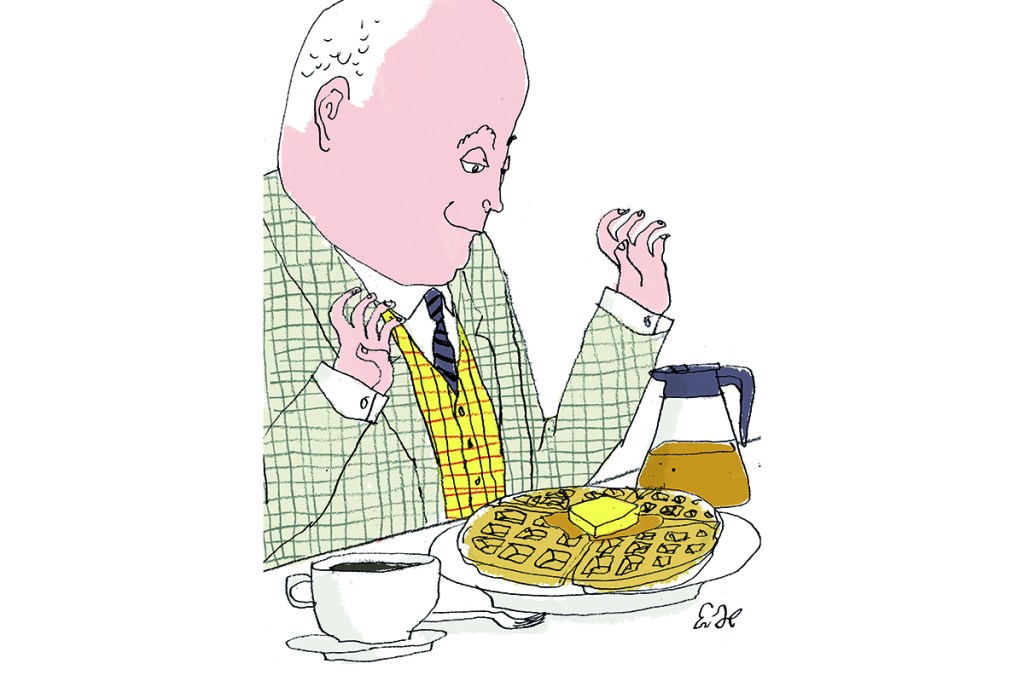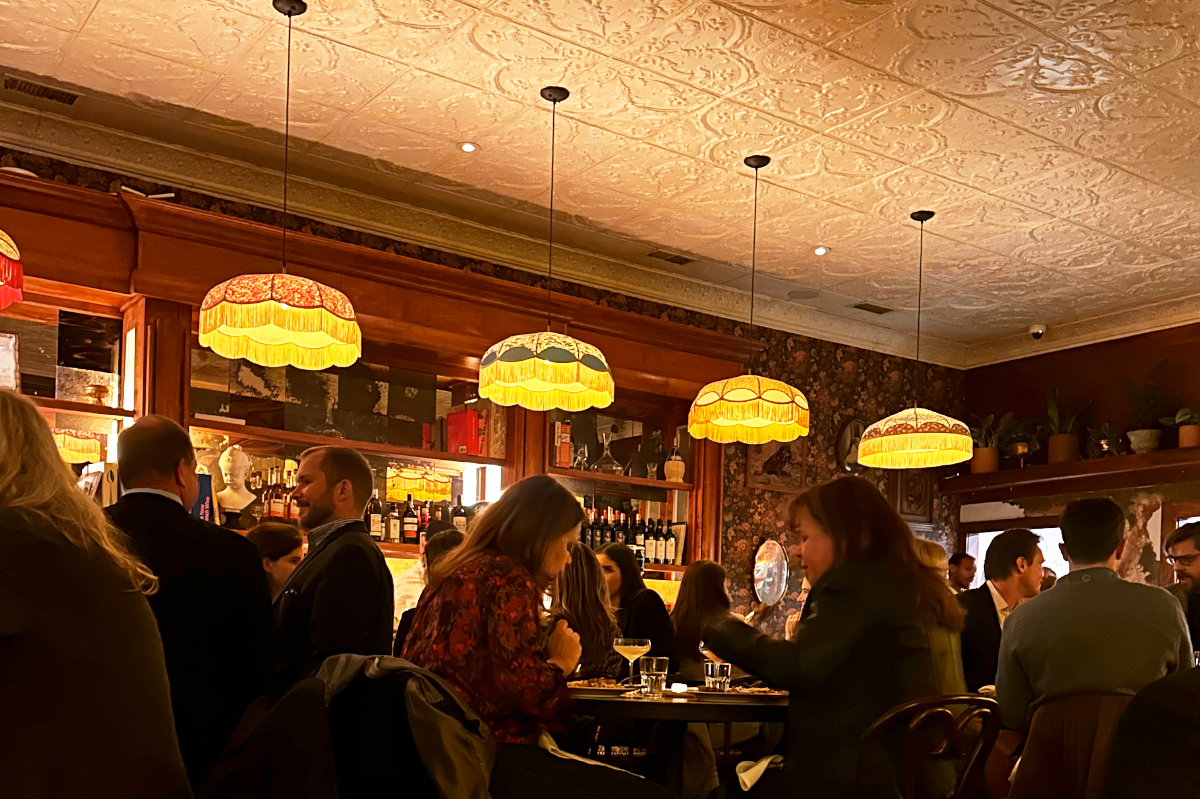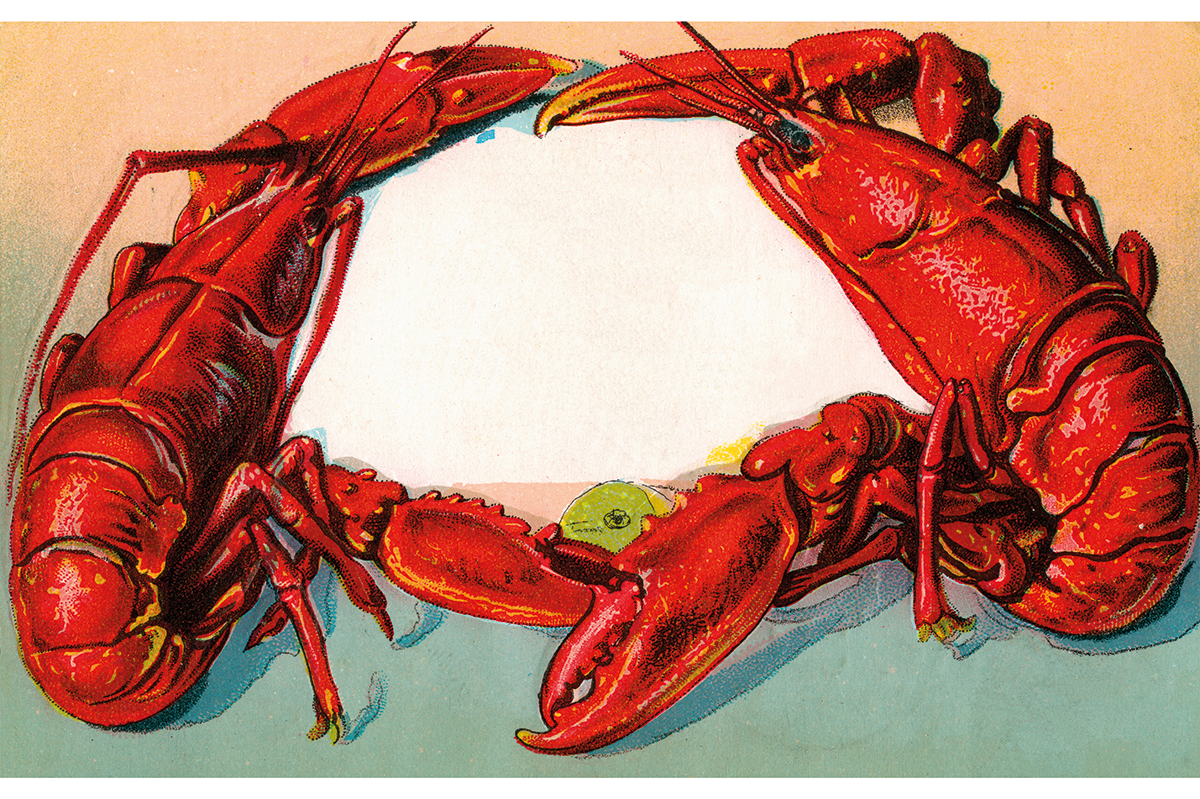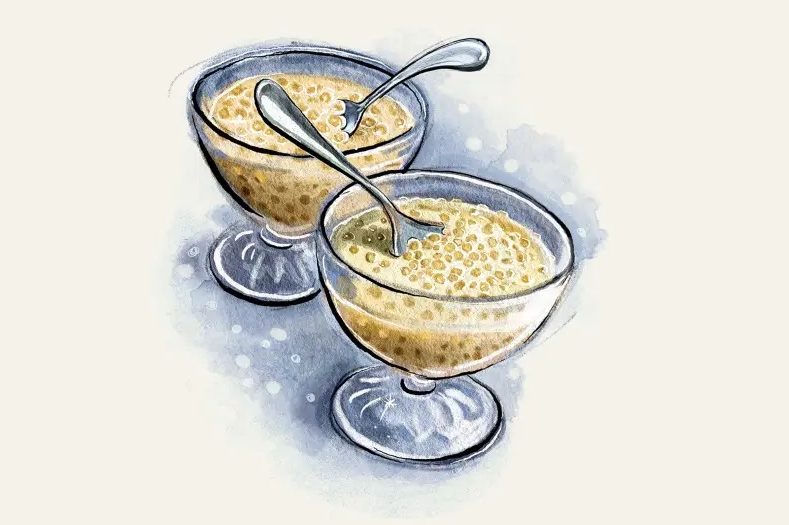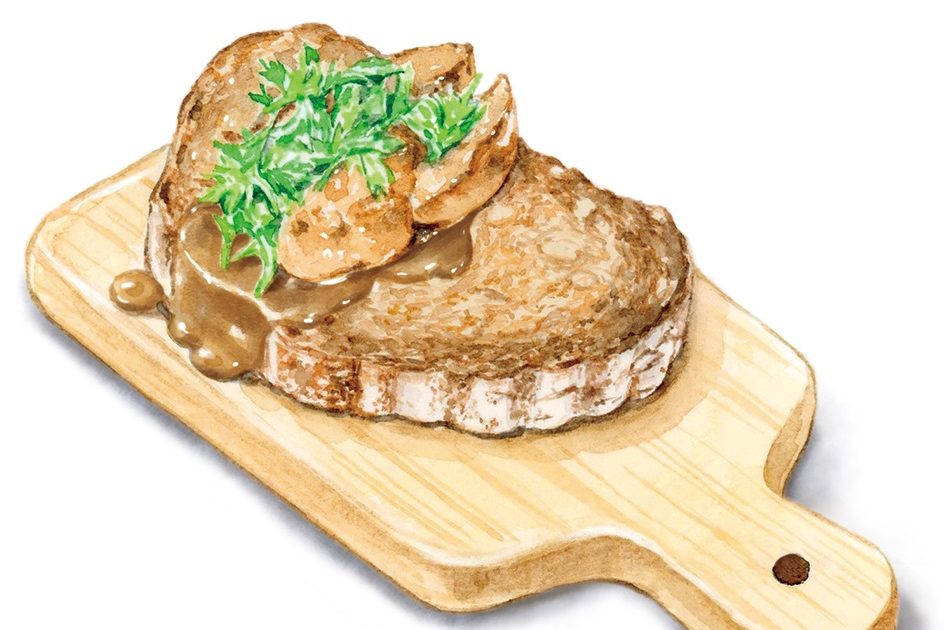“Snack bar,” “coffee shop” and such phrases once signified small eateries where customers sat on stools at a counter or in simple booths. Their orders were taken and served by waitresses in white aprons, and prepared by a short-order cook in a white paper cap. Hotel lobbies, railroad-station waiting rooms and airports all had them: private enterprises in public spaces purveying a cup of coffee and a donut, bacon and eggs, ham and cheese on rye, a hot dog, a hamburger, maybe a milkshake or an ice cream sundae. Little of this (for most were mom-and-pops) traveled well into the age of industrialized, assembly-line, eat-on-the-go feeding signified by the phrase “fast food.” But the genius of the market provided the exception: the franchised chain of more than 2,000 Waffle House short-order restaurants that carpets the Southeast and peppers the neighboring regions.
When entrepreneurs Joe Rogers, Sr. and Tom Forkner started out in 1955, they had in mind, Rogers said, “to make people feel better because they ate with us.” It wasn’t easy. For short-order to work across multiple locations, you need disciplined manual, not push-button, cooking techniques and serving patterns. The political philosopher Matthew Crawford likens such practices to the jig patterns which ensure clarity, speed and reliability in manual fabrication. Waffle House waitresses convey orders, always orally, in a shorthand language: “Pull one bacon.” “Hash browns scattered, smothered, covered.” They cue cooks as to what food goes on which plate with visual signals: a pat of butter on a plate means a T-bone, at the top means well-done, at the bottom means rare.
Everything on the twenty-four-hour menu — waffles; eggs, bacon and sausage; chicken or ham and cheese sandwiches; burgers and pork chops — is cooked only when ordered, on a hooded, always-on grill or in the waffle iron. The grill cooks’ concentration and dexterity are best seen when the orders come thick and fast. Take a seat at a Waffle House counter around 8 a.m. and watch. Your meal comes on real dishes with stainless flatware, the coffee in heavy mugs. Waitresses bus the tables they serve and wash the dishes just under the counter where you sit.
Waffle Houses typically huddle around interstate highway interchanges, but they attract wayfarers and locals alike. They are small, seating just thirty or forty or so at four-top booths and the counter. If there’s a wait, there’s a row of chairs by the window; watch the traffic and seat yourself. Though Waffle House has been called a “Southern icon,” the menu is less regional than plain American. There are grits, but also hash browns, which to my mind belong to the Midwest. Portions are reasonable, not outsized, and it is easy to clean your plate. Full bottles of condiments — never those unopenable single-serve plastic packets — cluster on each table and along the counter. Each is a classic: yellow mustard, red ketchup, A-1, Heinz 57 and Worcestershire steak sauces, and of course Tabasco: accept no substitutes. Contrary to fashion, Waffle House goes light on salads and greenery. Napkins are flimsy, useless white ones pulled from the metal dispenser.
Waffle House is small-d democratic and a model of diversity in its former, “all sorts and conditions” meaning: high and low, rich and poor. In these days when we are told that “optics” are everything, Nature takes her course on matters of complexion at Waffle House. The color of the customers and staff reflects the neighborhood. Where I live in western Virginia, it’s pretty much white; where I used to live in South Carolina, it’s pretty much black. Nothing special is made of this. Nondiscrimination is a core policy, but you can search the corporate literature in vain for “Diversity, Equity and Inclusion” posturing — or for liability-driven drivel about Covid and “caring about your safety.” The last time I went to Waffle House, I observed but one masked employee and no masked customers. There being no robbers at the till, that was that. Equally unfussy is the matter of ownership. Waffle House began as and remains a privately held company. But once you’re in, it’s open to all. If you want stock options, you have to go to work first.
Though no one will assault you with “Hi, my name’s Tanya and I’ll be your server today,” staffers wear badges displaying the American flag, and there is no mistaking a patriotic yet unpolitical atmosphere. (Compare and contrast the messaging at your local Starbucks.) Like Rick in Casablanca, who runs a saloon but doesn’t do politics, Waffle House sticks to the restaurant business. Everybody’s welcome — providing you wear a shirt and shoes and behave yourself. A friend and business partner, now passed on, had a habit of visiting a Waffle House late every Christmas Eve and putting Joe Rogers’s simple truth into action. After his hamburger and hash browns, he would pull an envelope from his coat, count the employees working the late shift, lay out a $50 bill for each one of them, and then wish all a Merry Christmas and all a good night.
This article was originally published in The Spectator’s March 2022 World edition.



